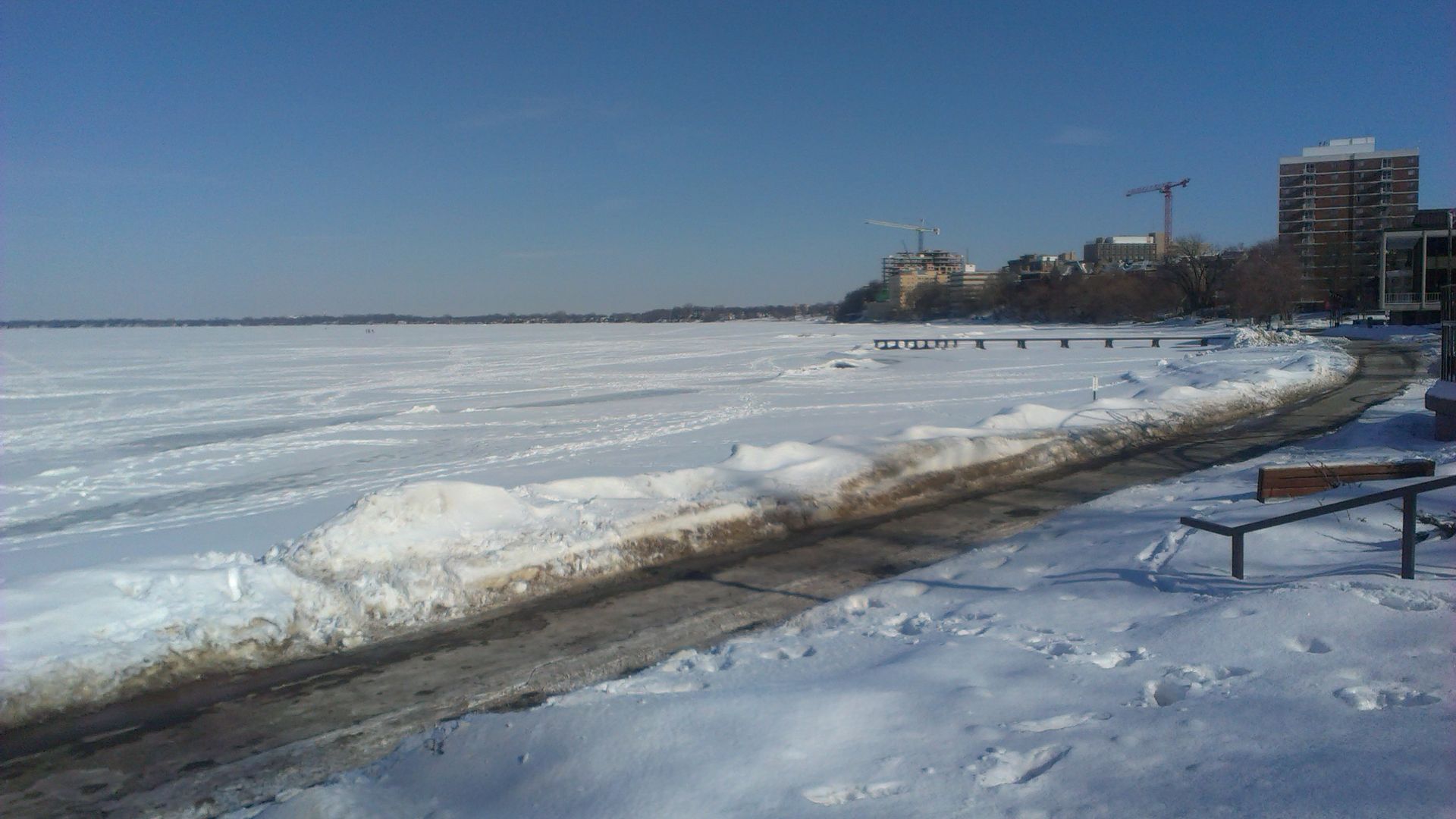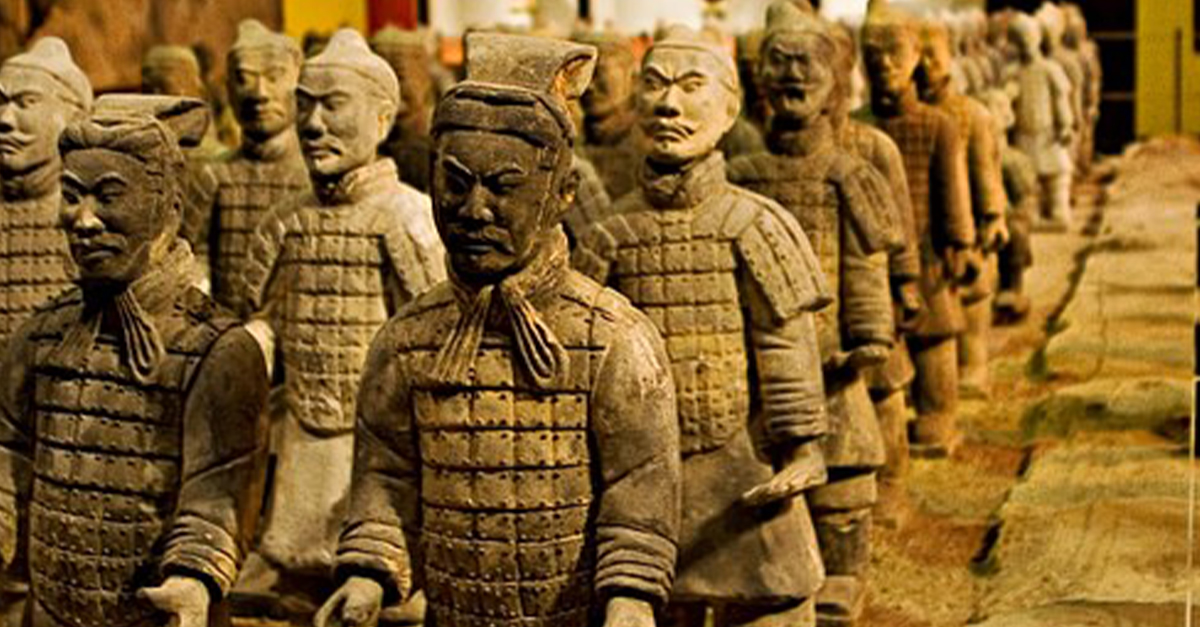The Canoes That Time Refused To Bury
Beneath the calm waters of Lake Mendota lies a story that could be as old as the Giza Pyramids and more enduring than parchment. What began as a diver’s curiosity led to a world-class archaeological revelation.

A Quiet Lake With A Thousand-Year Secret
Lake Mendota appears serene, but beneath its surface lies a timeline few expected. Known today for university sailing clubs and sunset watchers, its waters hold remnants of a prehistoric past. These ancient secrets challenge our assumptions about who lived here and the scale of their skills.
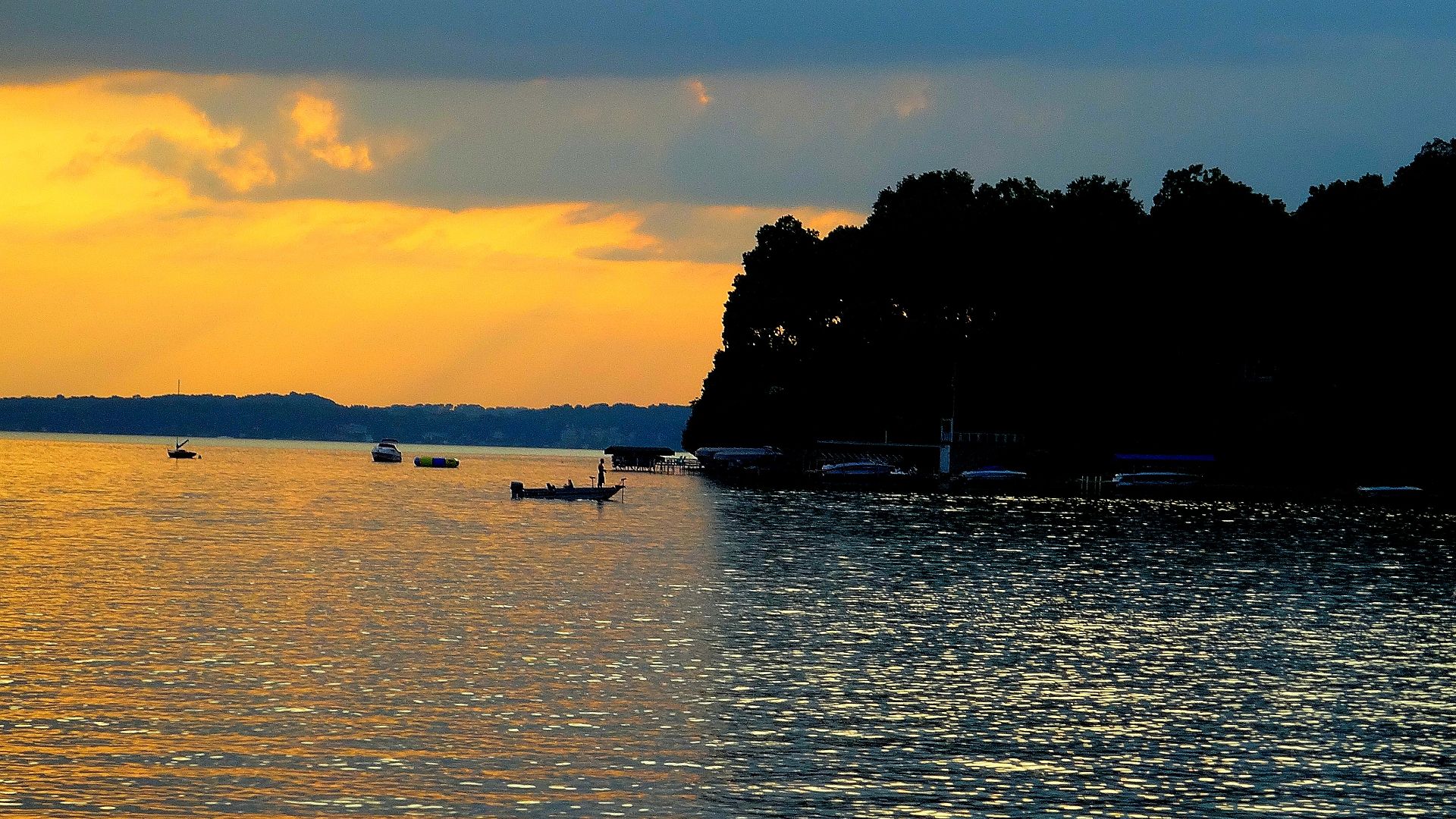 Corey Coyle, Wikimedia Commons
Corey Coyle, Wikimedia Commons
The Day The Water Whispered Its History
In 2021, maritime archaeologist Tamara Thomsen spotted something protruding from the lakebed—what turned out to be an ancient canoe. This single moment shifted Wisconsin’s archaeological narrative. The lake revealed history subtly by offering a rare and silent invitation to explore Indigenous ingenuity beneath the waves.
 Watch now: A 1,200-year-old dugout canoe is raised on Lake Mendota by madison.com
Watch now: A 1,200-year-old dugout canoe is raised on Lake Mendota by madison.com
A Diver’s Discovery That Changed Everything
Thomsen’s find was virtually unprecedented in the Great Lakes region. The canoe, carved from a single tree, had been preserved in the lake’s silty bottom for over a millennium. It triggered urgent excitement in archaeological circles and prompted an intensive effort to understand its cultural and historical context.
 Watch now: A 1,200-year-old dugout canoe is raised on Lake Mendota by madison.com
Watch now: A 1,200-year-old dugout canoe is raised on Lake Mendota by madison.com
The First Dugout Rises From The Depths
Archaeologists carefully extracted the first canoe, dating it to around 800 CE. Measuring roughly 15 feet long, it reflected practical design and remarkable woodworking skills. Dugout canoes like this allowed for efficient navigation of waterways. They were essential for trade, fishing, and seasonal movement in what’s now the heart of Madison, Wisconsin.
 Watch now: A 1,200-year-old dugout canoe is raised on Lake Mendota by madison.com
Watch now: A 1,200-year-old dugout canoe is raised on Lake Mendota by madison.com
A Time Stamp, 1,200 Years In The Making
Carbon dating revealed the first canoe was crafted more than 1,200 years ago, which aligned with the Late Woodland period. This era marked major shifts in social structure and mobility for Native peoples in the Midwest. The canoe was a material trace of a transformative historical moment.
 Watch now: A 1,200-year-old dugout canoe is raised on Lake Mendota by madison.com
Watch now: A 1,200-year-old dugout canoe is raised on Lake Mendota by madison.com
Then Came Another Even Older Still
Barely a year later, Thomsen discovered a second canoe buried nearby. This one was much older. Radiocarbon testing dates it to around 1,000 BCE, placing it in the Late Archaic period. Its survival offered a rare insight into tool use and cultural expression nearly 3,000 years before modern Wisconsin existed.
A 3,000-Year-Old Canoe Stuns The Archaeological World
The second canoe’s age made headlines. Few organic artifacts survive three millennia, let alone watercraft. Its preservation stunned archaeologists and confirmed that Indigenous communities possessed advanced woodworking skills long before European contact. This dugout highlighted a legacy of technological adaptation shaped by necessity and deep-rooted knowledge of native forests.
When One Find Becomes A Gateway To More
The discoveries sparked an expanded underwater investigation of Lake Mendota. What began as an isolated find turned into a sprawling archaeological dig. Researchers used sonar and diving surveys to examine lakebed contours. They hoped to uncover more buried vessels and possibly connect them to larger patterns of Indigenous settlement or resource use.
 Watch now: A 1,200-year-old dugout canoe is raised on Lake Mendota by madison.com
Watch now: A 1,200-year-old dugout canoe is raised on Lake Mendota by madison.com
Mapping Mysteries Beneath The Surface
To probe the lake’s secrets, scientists deployed ground-penetrating radar and sub-bottom profilers. These tools identified sediment anomalies and suggested deliberate human activity. Layers of silt acted as a natural time capsule that preserved canoes and other features possibly linked to ancient shorelines. The lake’s bottom began to resemble a submerged historical map.
 toshinori baba, Wikimedia Commons
toshinori baba, Wikimedia Commons
Eleven Canoes Resting Where Time Forgot
By 2024, at least 11 ancient canoes had been located beneath Lake Mendota’s waters. Each was buried at varying depths and intervals. This suggests long-term activity rather than a one-time event. The canoes range in age and construction style and offer a multi-layered view of life across thousands of years in Wisconsin.
 Watch now: A 1,200-year-old dugout canoe is raised on Lake Mendota by madison.com
Watch now: A 1,200-year-old dugout canoe is raised on Lake Mendota by madison.com
The Oldest Known Canoe In The Great Lakes
Among the 11 discovered, one canoe dates back over 4,500 years, making it the oldest ever found in the Great Lakes region. This remarkable timeline makes it almost as old as the Pyramids of Giza in Egypt. Its preservation under layers of lake sediment presents an unmatched glimpse into North American watercraft design.
 Watch now: A 1,200-year-old dugout canoe is raised on Lake Mendota by madison.com
Watch now: A 1,200-year-old dugout canoe is raised on Lake Mendota by madison.com
How Ancient Woodwork Still Holds Its Shape
Despite thousands of years underwater, many of the canoes retain recognizable form. Their preservation is credited to low oxygen levels and fine sediment that encased them like a blanket. Without exposure to air, the cellular structure of the wood remained intact and protected from rot and other forms of decay.
 Watch now: A 1,200-year-old dugout canoe is raised on Lake Mendota by madison.com
Watch now: A 1,200-year-old dugout canoe is raised on Lake Mendota by madison.com
Dugout Designs Passed From Hand To Hand
Each canoe was carved from a single log, hollowed with fire, and shaped with stone or bone tools. Their dimensions suggest designs passed down through generations and fine-tuned for balance and durability. Variations in length and hull shape hint at changing needs and different purposes across centuries.
Canoe Builders Who Knew Their Trees
Builders selected hardwoods like elm, ash, white oak, cottonwood, and other trees known for strength and buoyancy. These choices weren’t arbitrary. Indigenous craftsmen understood tree growth patterns and grain strength. Their woodworking knowledge passed orally and experientially, rivaled that of later European shipwrights in utility and precision.
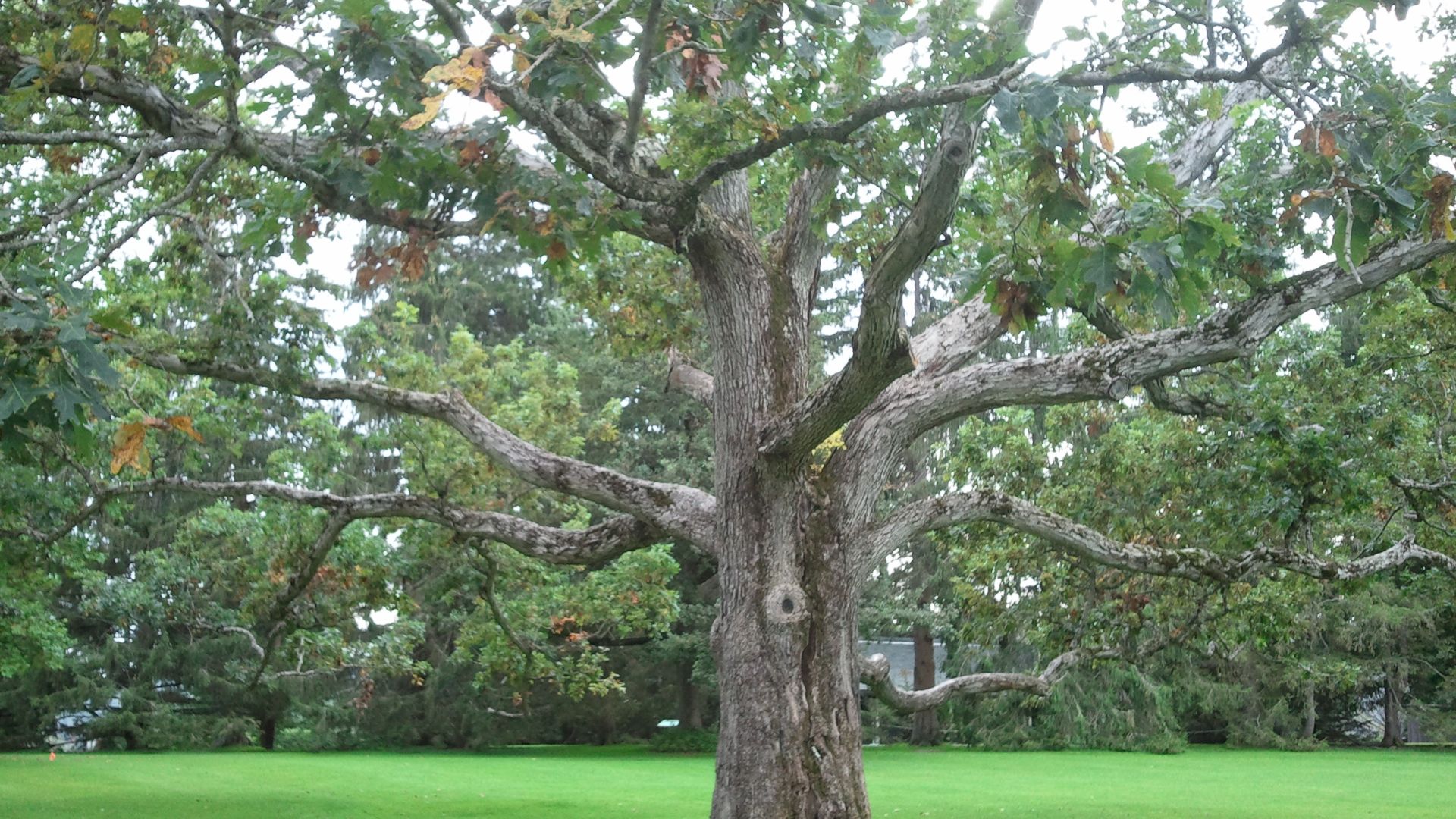 EgorovaSvetlana, Wikimedia Commons
EgorovaSvetlana, Wikimedia Commons
Messages Etched In Cottonwood And Oak
Tool marks and burn patterns reflect cultural knowledge. Some canoes show charring used to shape interiors; others display notching techniques tailored to specific river systems. Each vessel acts as a time-stamped message that highlights the intersection of skill and ancestral memory in wood.
Functional Tools Or Ceremonial Artifacts?
Some canoes appear purely utilitarian, while others raise questions. Could their placement and construction suggest ceremonial significance? Without associated tools or cargo, archaeologists weigh theories carefully. In ancient cultures, watercraft often served daily and spiritual purposes. They were used in trade but also in rites marking passage or death.
 LAKE MENDOTA CANOES: CONNECTING PAST & PRESENT by Wisconsin Historical Society
LAKE MENDOTA CANOES: CONNECTING PAST & PRESENT by Wisconsin Historical Society
A Place To Paddle Or A Place To Pray?
Lake Mendota’s shoreline may have served dual roles as a launch site for travel and a sacred space. Its positioning between major waterways and tribal territories could hint at deeper symbolism. The repeated submergence of vessels might reflect reverence or even spiritual offerings to water as a life-giving force.
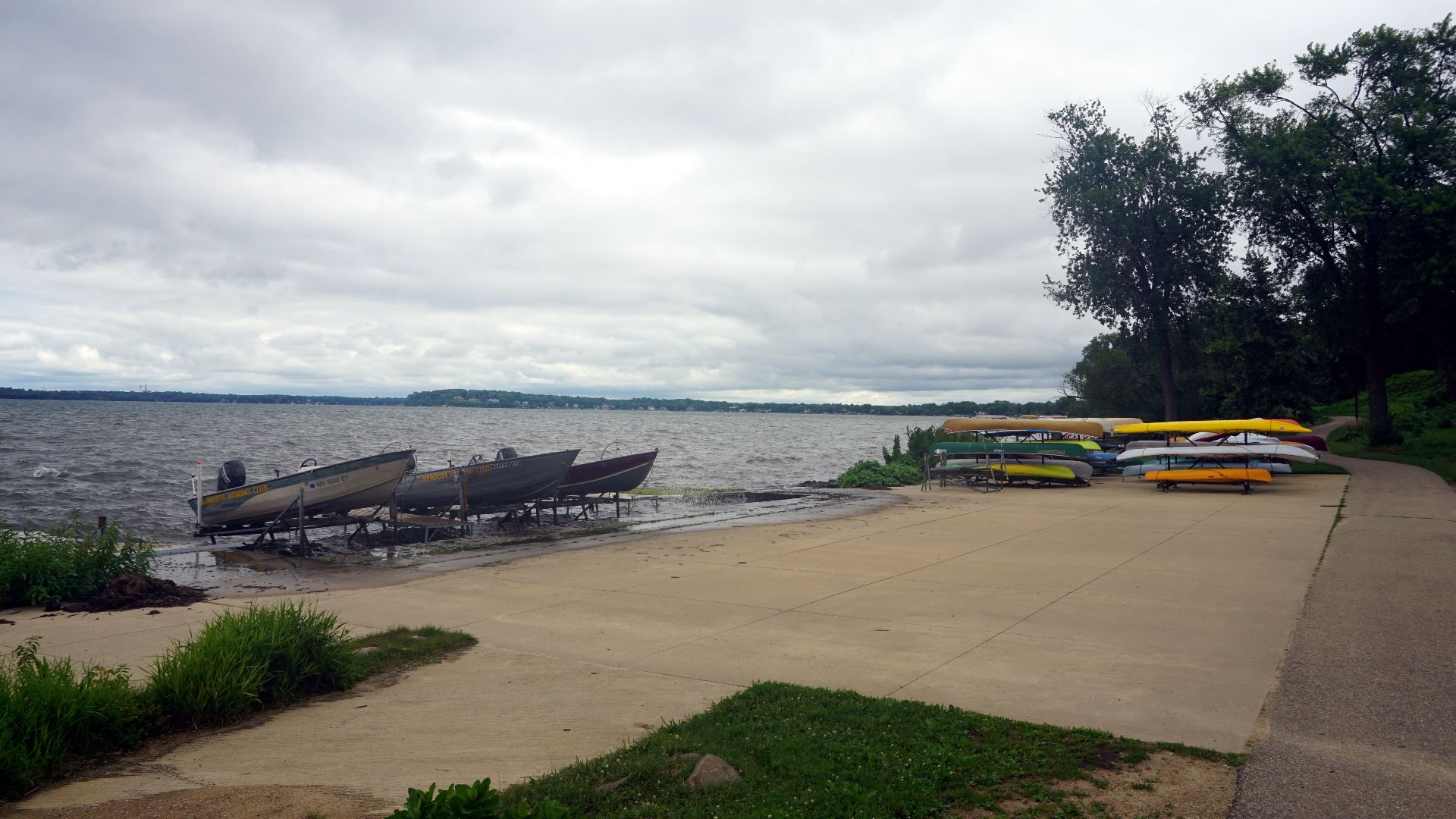 Michael Barera, Wikimedia Commons
Michael Barera, Wikimedia Commons
The Practice Of Sinking Canoes For Winter
One theory suggests these canoes were intentionally submerged in shallow water to prevent cracking during freezing winters. Water acts as insulation that keeps the wood moist and stable. If so, this reveals a sophisticated understanding of preservation and a methodical approach to seasonal equipment storage practiced centuries before written documentation existed.
Were They Preserving Wood Or Preserving Belief?
Archaeologists also consider symbolic motives. In some Indigenous traditions, placing items in water can mark spiritual closure or renewal. Were these canoes retired in ritual? Their careful placement and layered burial invite a broader interpretation of cultural and spiritual intent over time. However, more evidence is needed to confirm this belief.
 LAKE MENDOTA CANOES: CONNECTING PAST & PRESENT by Wisconsin Historical Society
LAKE MENDOTA CANOES: CONNECTING PAST & PRESENT by Wisconsin Historical Society
An Ancient Shoreline Lost To Rising Waters
Geological evidence suggests the current lake level is higher than it was during the canoes’ use. What was once a shoreline is now submerged. This shift supports the idea that these vessels were originally near settlements, not deep water. Changes in hydrology may have gradually buried this once-bustling coastal corridor.
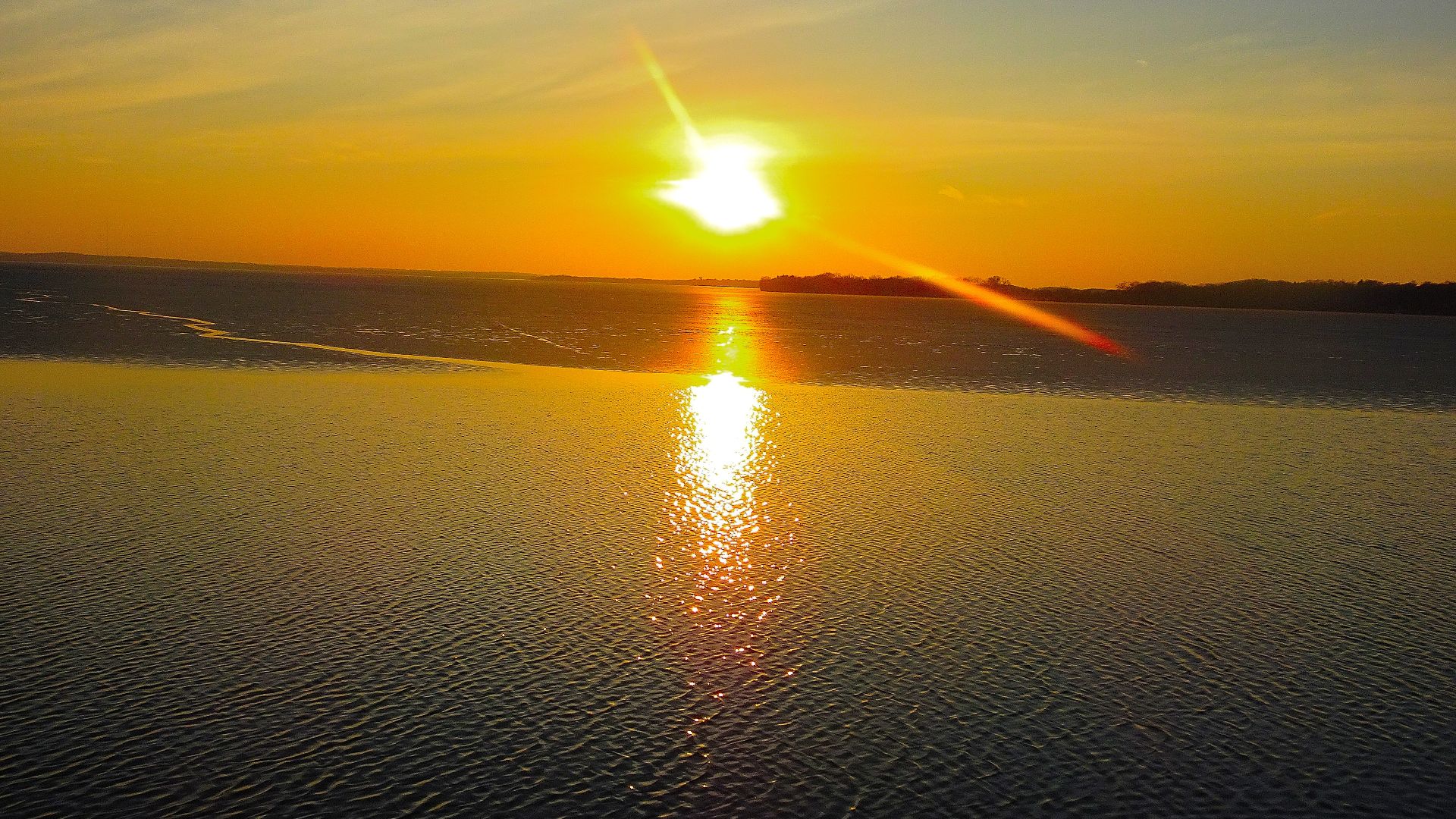 Corey Coyle, Wikimedia Commons
Corey Coyle, Wikimedia Commons
Could A Village Be Hidden Beneath The Silt?
Sonar and sediment scans show geometric patterns near the canoes. These could be possible signs of hearths or storage pits. Archaeologists suspect an ancient lakeside community once stood there. If confirmed, it would mark Lake Mendota as a prehistoric hub of seasonal or permanent settlement.
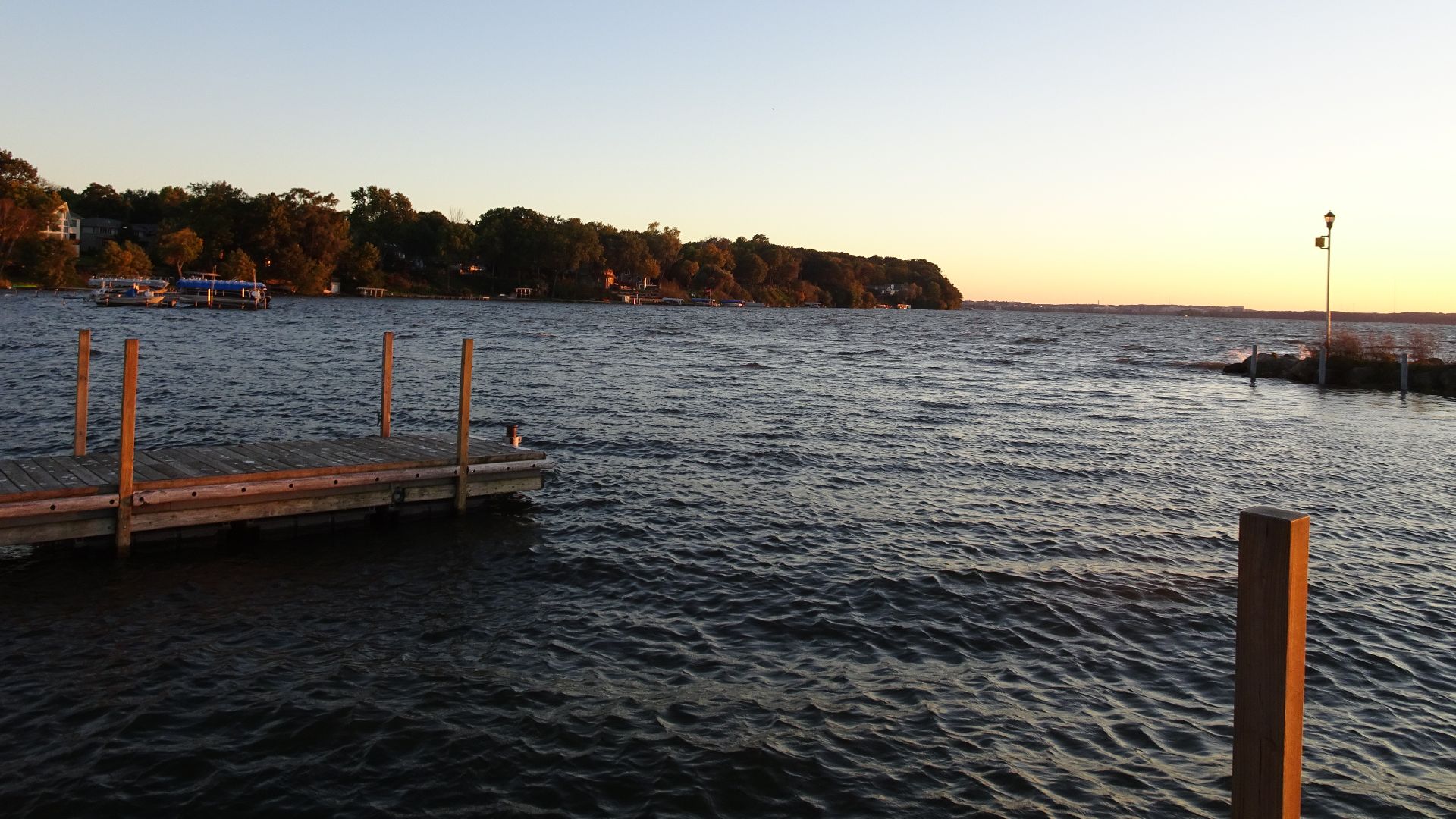 Corey Coyle, Wikimedia Commons
Corey Coyle, Wikimedia Commons
Lakebed Clues Suggest Human Settlement
Beyond the canoes, researchers have found subtle modifications beneath the lake. These could be possible channels or depressions shaped by repeated foot traffic. Such features often accompany habitation zones. Though no bones or tools have surfaced yet, the placement of multiple canoes hints at organized, long-term human activity near this watery site.
 LAKE MENDOTA CANOES: CONNECTING PAST & PRESENT by Wisconsin Historical Society
LAKE MENDOTA CANOES: CONNECTING PAST & PRESENT by Wisconsin Historical Society
The Patterned Placement Tells A Bigger Story
The canoes weren’t scattered randomly. Many rest at consistent depths and orientations, implying deliberate alignment. This pattern suggests storage, ritual use, seasonal routines, or a behavior governed by cultural rules rather than chance. Understanding these spatial relationships could reshape our picture of land use.
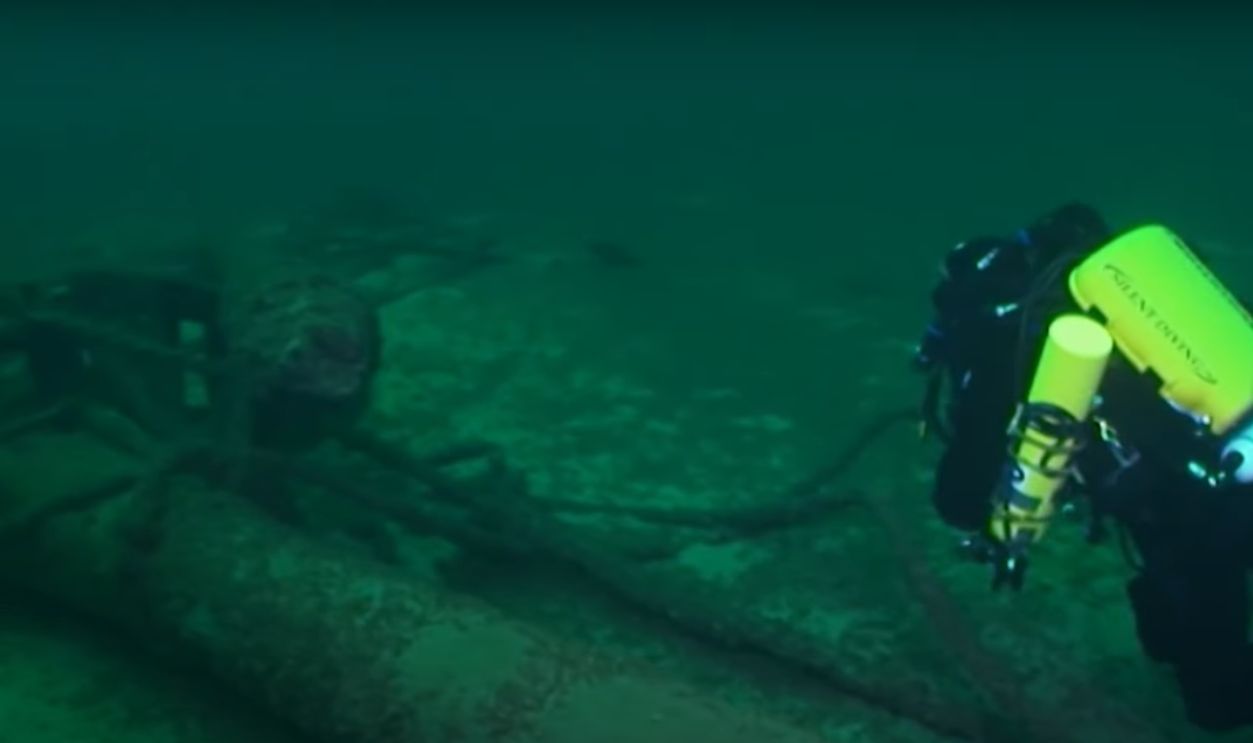 LAKE MENDOTA CANOES: CONNECTING PAST & PRESENT by Wisconsin Historical Society
LAKE MENDOTA CANOES: CONNECTING PAST & PRESENT by Wisconsin Historical Society
Generations Carved Their Legacy Into The Water
With vessels spanning thousands of years, it’s clear that this wasn’t a one-time event. Multiple generations returned to the same site to carve similar boats and choose similar trees. This continuity offers rare archaeological proof of long-standing Indigenous traditions passed from elders to apprentices, shoreline to shoreline.
 LAKE MENDOTA CANOES: CONNECTING PAST & PRESENT by Wisconsin Historical Society
LAKE MENDOTA CANOES: CONNECTING PAST & PRESENT by Wisconsin Historical Society
Technologies Born Before Recorded Time
Although these canoes predate written records, they show deliberate engineering. Builders adjusted bow curvature and log diameter for balance and weight distribution. Even tool marks point to specialized shaping techniques. These technologies were refined across centuries through observation and intergenerational exchange.
 LAKE MENDOTA CANOES: CONNECTING PAST & PRESENT by Wisconsin Historical Society
LAKE MENDOTA CANOES: CONNECTING PAST & PRESENT by Wisconsin Historical Society
Signs Of Trade Woven Into Workmanship
Some canoes were made from wood not commonly found around Lake Mendota. This raises the possibility of a trade, either of materials or finished vessels. Their presence suggests long-distance connections among Indigenous groups, where knowledge and workmanship moved across forested river networks.
 LAKE MENDOTA CANOES: CONNECTING PAST & PRESENT by Wisconsin Historical Society
LAKE MENDOTA CANOES: CONNECTING PAST & PRESENT by Wisconsin Historical Society
Canoes That Once Bridged River To River
Lake Mendota connects to a web of waterways leading to the Mississippi River. These canoes likely served as links between communities and allowed for seasonal movement and communication. Each vessel was a bridge between villages and cultures across vast stretches of the prehistoric Midwest.
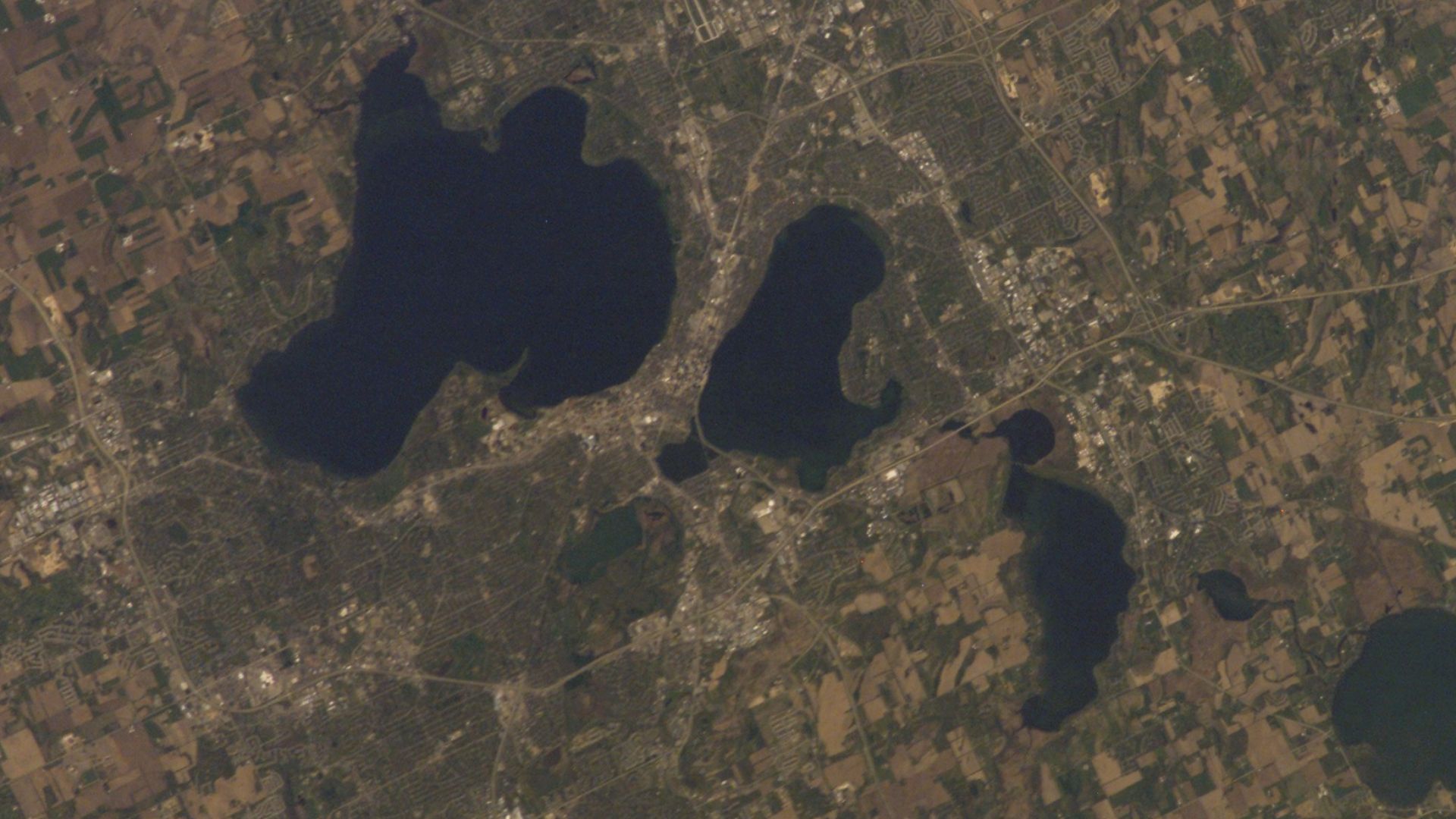 Earth Science and Remote Sensing Unit, Lyndon B. Johnson Space Center, Wikimedia Commons
Earth Science and Remote Sensing Unit, Lyndon B. Johnson Space Center, Wikimedia Commons
A Travel Network Buried In Mud
Far from isolated relics, these canoes may be remnants of a vast transportation system that predates European maps. Canoe trails once cut through thick forests and open lakes. What rests in the silt could represent only a fraction of a legacy shaped by adaptation and environmental mastery.
 LAKE MENDOTA CANOES: CONNECTING PAST & PRESENT by Wisconsin Historical Society
LAKE MENDOTA CANOES: CONNECTING PAST & PRESENT by Wisconsin Historical Society
Ritual, Routine, And The River’s Role
Waterways influenced spiritual life and social gatherings, and canoes were central to these activities. Whether heading to a trading site or a ceremonial place, movement on the water was embedded in a daily rhythm. Rivers were connective tissue for Indigenous civilization.
 LAKE MENDOTA CANOES: CONNECTING PAST & PRESENT by Wisconsin Historical Society
LAKE MENDOTA CANOES: CONNECTING PAST & PRESENT by Wisconsin Historical Society
What The Wood Tells Us About Climate Survival
Species selection wasn’t just about strength. Elm and oak resist mold and cracking. This was ideal for a canoe facing rain and sun. Indigenous builders understood which trees endured harsh Midwest seasons. Their wood choices reflect a climate-savvy culture whose materials and methods were built for long-term survival.
 LAKE MENDOTA CANOES: CONNECTING PAST & PRESENT by Wisconsin Historical Society
LAKE MENDOTA CANOES: CONNECTING PAST & PRESENT by Wisconsin Historical Society
A Culture Remembered Through Submerged Tools
Tools rot, and villages vanish. But these canoes survived as silent markers of a vanished era. Their placement and condition serve as rare cultural artifacts that speak for a people whose voices were largely silenced by colonization. Each canoe reintroduces lost knowledge and gives Indigenous heritage physical form in the archaeological record.
 LAKE MENDOTA CANOES: CONNECTING PAST & PRESENT by Wisconsin Historical Society
LAKE MENDOTA CANOES: CONNECTING PAST & PRESENT by Wisconsin Historical Society
Native Voices Add Meaning To Discovery
Wisconsin’s Native Nations have partnered in canoe research by offering oral traditions and cultural interpretation. Archaeologists and tribes are co-stewards of the findings to ensure respectful handling and accurate storytelling. These collaborations turn excavation into education by linking scientific evidence with generational memory.
 LAKE MENDOTA CANOES: CONNECTING PAST & PRESENT by Wisconsin Historical Society
LAKE MENDOTA CANOES: CONNECTING PAST & PRESENT by Wisconsin Historical Society
Stories That Were Spoken Before They Were Studied
Long before carbon dating, these canoes lived in stories that were shared around fires and passed from elders to children. Though undocumented in writing, memories of canoe-making and water travel persist in Indigenous communities. Archaeological finds now echo what ancestors always knew: these were part of living history.
 LAKE MENDOTA CANOES: CONNECTING PAST & PRESENT by Wisconsin Historical Society
LAKE MENDOTA CANOES: CONNECTING PAST & PRESENT by Wisconsin Historical Society
Ancient Knowledge Confirmed By Modern Science
What oral histories preserved, science is now validating. Dendrochronology and radiocarbon dating match the timelines of regional Indigenous migration and seasonal routines. Technical analysis doesn’t replace ancestral knowledge, but it supports it. In rare harmony, science and tradition paint a fuller picture of ancient life on Wisconsin’s waterways.
 LAKE MENDOTA CANOES: CONNECTING PAST & PRESENT by Wisconsin Historical Society
LAKE MENDOTA CANOES: CONNECTING PAST & PRESENT by Wisconsin Historical Society
When Preservation Becomes A Race Against Time
Once unearthed, ancient wood deteriorates rapidly when exposed to air. Archaeologists must act fast by stabilizing each canoe before decomposition begins. Preservation specialists work under pressure to apply conservation methods developed for shipwrecks and ice-age finds. The race ensures these voices aren’t lost again.
 LAKE MENDOTA CANOES: CONNECTING PAST & PRESENT by Wisconsin Historical Society
LAKE MENDOTA CANOES: CONNECTING PAST & PRESENT by Wisconsin Historical Society
Why Most Canoes Remain Undisturbed Today
Only two canoes have been recovered, while the others remain in place. Archaeologists made this choice to protect the remaining vessels from premature decay. The lakebed acts as a natural preservation chamber that shields delicate wood from exposure. Excavation may resume, but only when science can ensure long-term conservation and context.
 LAKE MENDOTA CANOES: CONNECTING PAST & PRESENT by Wisconsin Historical Society
LAKE MENDOTA CANOES: CONNECTING PAST & PRESENT by Wisconsin Historical Society
Inside The Lab Where History Is Stabilized
The recovered canoes are undergoing conservation at the State Archive Preservation Facility in Madison. Here, specialists slowly infuse the waterlogged wood with polyethylene glycol—a synthetic wax that replaces cellular moisture. This process strengthens the ancient timber without warping to preserve its shape and tool marks for future generations.
 LAKE MENDOTA CANOES: CONNECTING PAST & PRESENT by Wisconsin Historical Society
LAKE MENDOTA CANOES: CONNECTING PAST & PRESENT by Wisconsin Historical Society
How Scientists Freeze The Past To Save It
After months of chemical soaking, the canoes are freeze-dried in high-tech chambers. This final stage removes residual moisture without shrinkage to halt decay entirely. It’s the same method used on Viking ships and ancient bog finds, which combines science with historical reverence to ensure these fragile artifacts last centuries longer.
Preparing Canoes For Their Final Journey
Once preserved, the canoes will transition from the lab to the gallery. They’ll be carefully mounted for stability, with their forms kept intact using custom supports. Accompanying displays will contextualize each vessel’s age and wood type. These silent wooden hulls will become storytellers within a modern museum setting.
A Museum Ready To Tell Their Story
The Wisconsin History Center, set to open in 2027, will feature these canoes as signature exhibits. They’ll serve as focal points in exploring Indigenous resilience and continuity. Visitors will encounter a reawakened cultural narrative carried forward through time.
Wisconsin’s Deepest History Comes To Light
These discoveries push the timeline of Indigenous engineering and settlement back thousands of years, far earlier than most public narratives acknowledge. Through submerged wood and careful excavation, a deeper chapter of Native innovation and lifeways now takes its place in the broader American historical context.
 LAKE MENDOTA CANOES: CONNECTING PAST & PRESENT by Wisconsin Historical Society
LAKE MENDOTA CANOES: CONNECTING PAST & PRESENT by Wisconsin Historical Society
A Local Discovery With Global Reverberations
Though found in a single lake, these canoes have drawn global attention. Archaeologists from around the world are studying preservation and context. Few sites offer this range of ages and conditions. Lake Mendota now stands beside Europe’s bog finds and Asia’s river relics as a world-class discovery.
 LAKE MENDOTA CANOES: CONNECTING PAST & PRESENT by Wisconsin Historical Society
LAKE MENDOTA CANOES: CONNECTING PAST & PRESENT by Wisconsin Historical Society
These Canoes Are Rewriting North American Prehistory
The age and skillfulness of the canoes force scholars to rethink long-held ideas about mobility and settlement patterns in North America. Rather than isolated woodland groups, the evidence points to organized, innovative communities with long-standing maritime traditions. This revelation shifts the academic map of prehistoric activity.
 LAKE MENDOTA CANOES: CONNECTING PAST & PRESENT by Wisconsin Historical Society
LAKE MENDOTA CANOES: CONNECTING PAST & PRESENT by Wisconsin Historical Society
What Four Thousand Years In Silence Finally Said
Until recently, these canoes lay silent under silt. Now, they speak of creativity and continuity. Their forms reflect knowledge passed through generations. This discovery ensures these ancient builders are not forgotten but reintroduced as active voices in the long, complex story of America’s past.
 LAKE MENDOTA CANOES: CONNECTING PAST & PRESENT by Wisconsin Historical Society
LAKE MENDOTA CANOES: CONNECTING PAST & PRESENT by Wisconsin Historical Society






